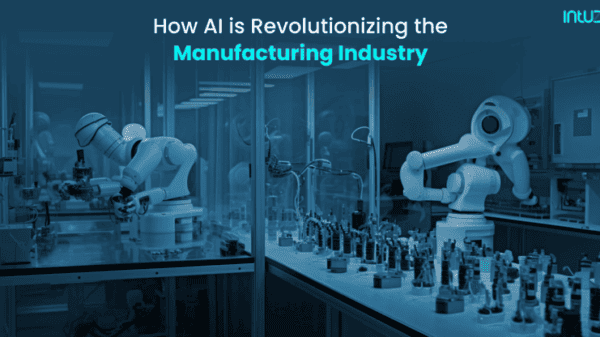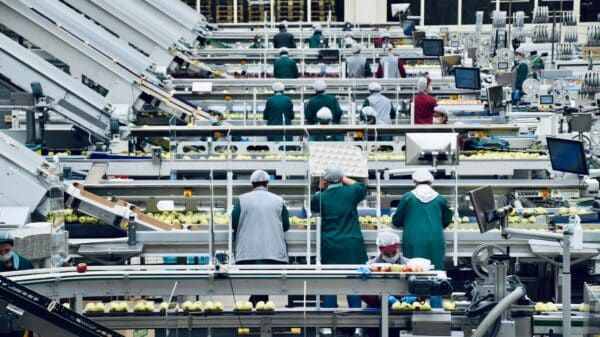Abstract
Industrial Internet of Things, and Smart Manufacturing, are now buzz words that are getting a lot of attention. Consortium and alliances are forming, and studies are underway to develop an enhanced internet standard to enable the full potential of this technology. IT efforts are focused on Big Data and Analytics, as well as cyber security vulnerabilities mitigation. Technology suppliers are working on smaller more powerful connected devices to deploy in manufacturing environments. Seminars and Webinar are appearing online on a daily basis, underlining the widespread involvement of industry in this arena as tremendous benefits are expected from the full realization of this technology.
Introduction
According to the National Institute of Standards and Technology (NIST) Smart Manufacturing are systems that are “fully-integrated, collaborative manufacturing systems that respond in real time to meet changing demands and conditions in the factory, in the supply network, and in customer needs.” The Smart Manufacturing Leadership Coalition definition is “Smart Manufacturing is the ability to solve existing and future problems via on open infrastructure that allows solutions to be implemented at the speed of business while creating advantaged value.”
Manufacturing experts and strategist are predicting Smart Manufacturing, also referred to as Industry 4.0, to be the Fourth Industrial Revolution. This revolution is driven by the proliferation and ubiquitous use of connectivity and the access to increasingly less expensive yet more powerful data acquisition, storage, and analytics. It is a vision of smart factories built with intelligent cyber-physical systems.
The Industrial Internet of Things
A new revolution is occurring within industry. It is a revolution resulting from the convergence of industrial systems with advanced computing, sensors and communication systems. It is a transformative event where countless industrial devices, both old and new, are beginning to use Internet Protocol (IP) communication technologies. The network of these devices is referred to as the Industrial Internet of Things (IIoT), and is a subset of what we have come to know as the Internet of Things (IoT). The IoT includes all types of devices ranging from home appliances, light bulbs, automation systems, watches, to even our cars and trucks. These systems are largely focused on sensor technology along with the collection, transmission, and processing of sensory data. However, the things and goals of IIoT are usually different, they also incorporate machine learning and big data, harnessing the power of sensor data and automation.
Enabling a higher level of manufacturing automation and integration with the entire enterprise value chain, the Industrial Internet of Things is here to stay and is changing the way manufacturers think about business. There is great need and desire for increased connectivity and access to valuable data produced by manufacturing processes. IIoT focuses on the interconnectivity and harnessing of powerful data, and conveys a want and a need for better access to data and remote connectivity in every device we can get our hands on, including machines – process and discrete – in our factories, storage racks, transportation vehicles, warehousing pallets and packaging, and much more.
Industry 4.0, the Fourth Industrial Revolution

The First Industrial Revolution started with the use of wind water and steam to mechanize production, enabling humans to carry out tasks that were previously impossible.
The Second Industrial Revolution resulted from electric power enabling mass production. Multi-shift operations lead to the adoption of interchangeable components, allowing for large scale production.
The Third Industrial Revolution was characterized by the use of electronics and information technology to automate production. This freed up humans from performing highly repetitive tasks, strenuous tasks, as well as tasks that could lead to injuries. The operator’s role shifted from one who performed the tasks to one who programmed them and supervised them, stepping in only when needed.
The Fourth Industrial Revolution, or Industry 4.0, is the pervasive deployment of intelligent devices and machines on a widespread network and on the cloud, enabling humans to collect data from systems built in the third industrial revolution and incorporating it with the ever-present technologies used in our daily lives to work faster smarter, and achieve greater gains than ever before.
Enablers of Industry 4.0
More and more smart devices are being deployed in industry, enabling equipment to become more intelligent and generating a wealth of information that can be used to streamline processes and improve efficiency. Eyes are on emerging technologies and development work towards cyber physical systems that are smart enough to learn (using artificial intelligence) and perhaps even repair themselves.
Additive-manufacturing methods are of particular interest and will have great impact on manufacturing efficiencies and sustainability. Additive Manufacturing can be widely used to produce small batches of customized products that offer structural advantages, such as complex strong lightweight designs. High-performance, decentralized Additive Manufacturing systems can make any products on demand, just-in-time, while reducing transport costs, raw material waste, and stock inventory. This will add great value to customers by offering mass customization – in Lot Sizes of 1– while minimizing capital investment and environmental footprint.
Some companies are creating business units and systems dedicated to digital deployments to best leverage the IIoT technologies they’re providing. Honeywell Process Solutions, for example, established a Digital Transformation unit to help manufacturers harness the Industrial Internet of Things and more rapidly deploy technologies that will allow them to better manage and analyze data. Honeywell’s new business unit will be a focused resource to provide that expertise to manufacturers who are looking to take the next step to manage and exploit data across multiple sites in locations across the globe.
Challenges and Concerns
Security – Cybersecurity and data privacy issues present major hurdles and roadblocks for adopters of Industrial IoT technologies, and if these issues are not appropriately addressed, the true potential of the Industrial IoT might not be met.
Integration – In existing facilities, one key challenge is to add new connections and capabilities while preserving the existing investment in infrastructure. Connecting legacy equipment and devices from different vendors poses a real challenge to IIoT implementations. Different devices may have different communication protocols and will need to communicate with one another. For facilities with a large number of devices in place, replacing them is not an option due to cost and integration time. Protocol conversion becomes an essential tool that would enable communication between them. Protocol converters are available from many suppliers like Anybus, or Redlion to name a couple.
Network Compatibility – To fulfill the promise of Industry 4.0, standard network technologies must evolve to meet the demanding requirements of next-generation industrial systems and improve machine operation, electrical grids and transportation systems. The Industrial Internet Consortium (IIC), and organizations like Schneider Electric, National Instruments, and Cisco are collaborating on developing a test bed for what is called Time Sensitive Networks (TSN), which is based on a new IEEE 802 local area network standard. Their aim is to advance network infrastructure to support the future of the Industrial Internet of Things (IIoT) and Industry 4.0.
Opportunities
IIoT technologies can help manufacturers eliminate unplanned shutdowns, maximize output, minimize safety risk and optimize supply chain strategies. The Industrial Internet of Things will drastically change the future, not just for industrial systems, but also for the many people involved. Advanced computing, mobility, cloud-based solutions, and enterprise digitization are beginning to enable the next big revolution in performance and operations, turning data into actionable knowledge.

Big data is already being used in manufacturing. For example, Toyota deployed a big data control tower for dashboards that provides an integrated tracking of parts supply chain. This system resulted in an $187 million per year downtime avoidance! If we can achieve the full potential of the IIoT vision, many people will have an opportunity to better their careers and standards of living because the full potential of this vision will lead to countless value creation opportunities.
IIoT can lead to smart power grids, smart healthcare, smart logistics, smart diagnostics, and the development of innovative new products using next-generation materials. It will allow us to achieve unprecedented levels of operational efficiencies and accelerated growth in productivity.
New types of advanced manufacturing and industrial processes revolving around machine-to-human collaboration and symbiotic product realization will emerge.
Conclusion
The Industrial Internet of Things can have a bright and shiny future. Smart Manufacturing will increase the flexibility of our plants, lower the cost of products, and improve environmental sustainability.
Investments in a Smart Manufacturing infrastructure are essential to securing our industrial future, and the future economic well-being of all citizens. It will enable us to develop innovative new products using next-generation materials, and will allow us to achieve unprecedented levels of operational efficiencies and accelerated growth in productivity. It will truly be amazing to see all of the many benefits and technological advances that can be gained if we can achieve the full potential of this technology.
I am an IT professional with 18+ years of experience building and managing software products and services. My current areas of interest are Nex-Gen ERP, inter-play of mobility and social-experience and IoT.

1 Comment
Leave a Reply
Cancel reply
Leave a Reply
This site uses Akismet to reduce spam. Learn how your comment data is processed.
























































































































































































Mary
June 22, 2016 at 1:46 pm
The increase of population allover the world needs such kind of thoughts. Smart Manufacturing will greatly uplift living standards.